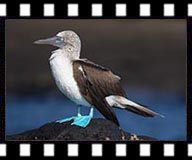Day 4 (Wednesday, May 23): Fernandina Island(Punta Espinoza) and Isabela Island (Urbina Bay)
After a long night's sailing, we reached the waters between Fernandina and Isabela Islands. In fact, we lost an engine at night and were sailing at a reduced speed (the crew did a great job of rearranging the sailing schedule to take us to all the points of interest on this itinerary). These are the two youngest volcanic islands in the archipelago, and the landscape had a more primitive look. I had the cleanest sunrise of the trip on this morning.
(Click on each image to see the high-resolution version)
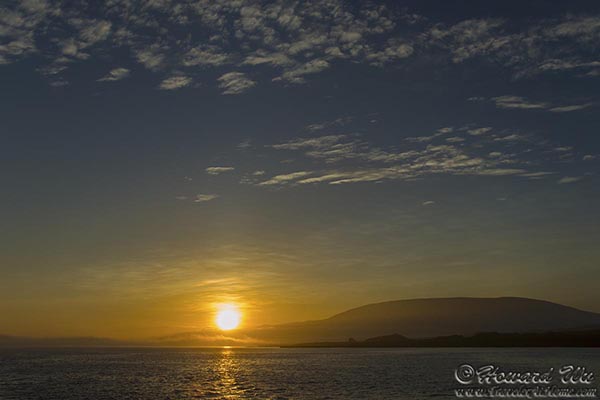
Sunrise over Isabela Island
The sundeck of the ship was a great place to watch sea birds and other marine creatures. This Galapagos Shearwater was one of the pelagic birds that I photographed.
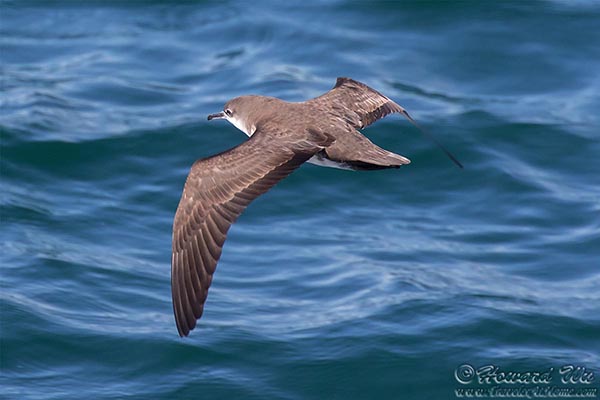
Galapagos Shearwater
In the morning we reached Punta Espinoza on Fernandina Island. The weather was marvelous on this morning and the view was splendid on this youngest and most volcanically active major island (more on this later).
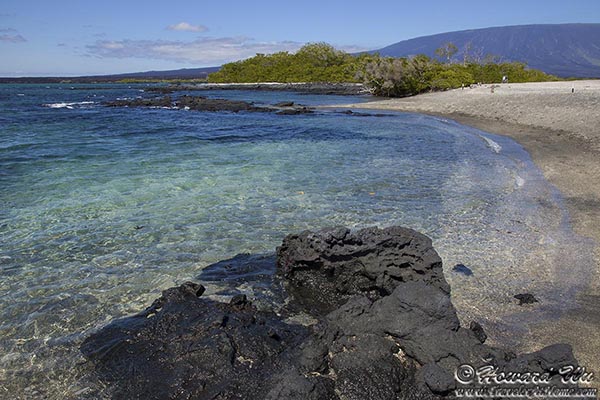
Punta Espinoza
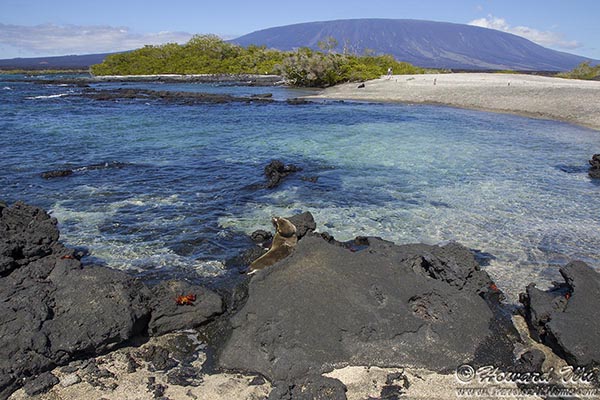
Punta Espinoza
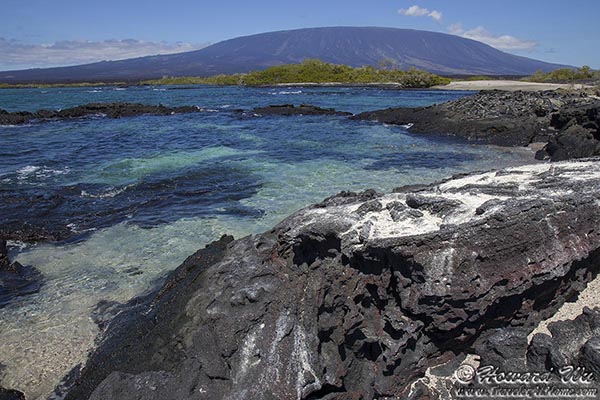
Punta Espinoza
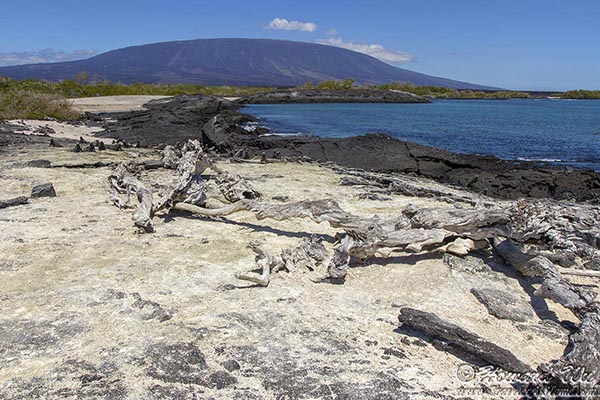
Punta Espinoza
Punta Espinoza is a good place to see two species of reptiles, one of them is the Lava Lizard. Several of them were very active this morning.
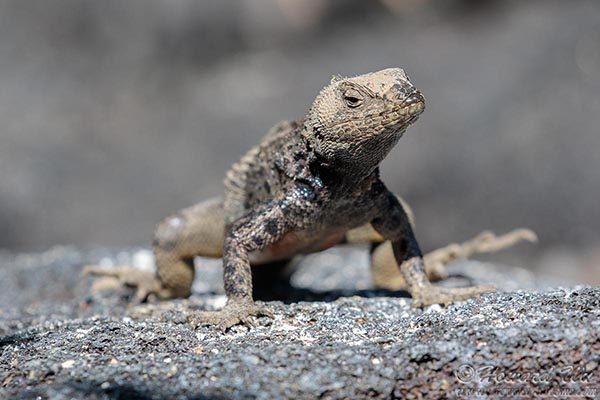
Lava Lizard
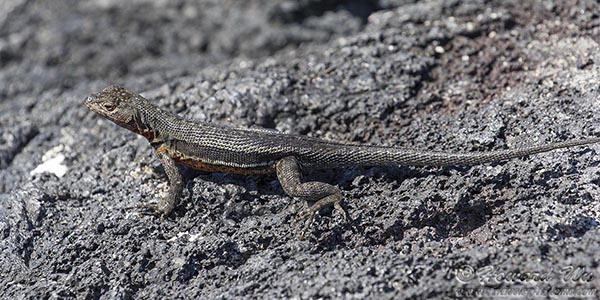
Lava Lizard
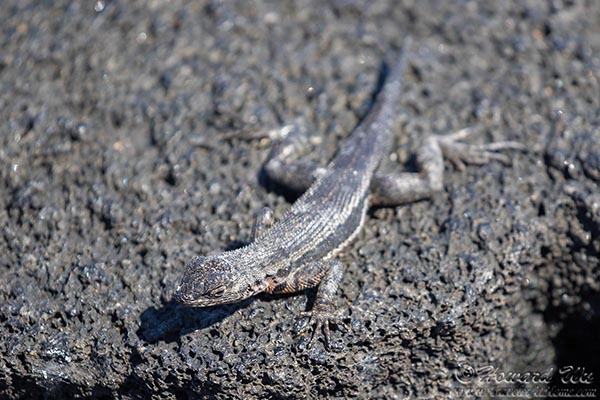
Lava Lizard
The other reptile abundant on this island is the Marine Iguana. We had seen them on other islands, but this was the place we saw the greatest numbers on this trip.
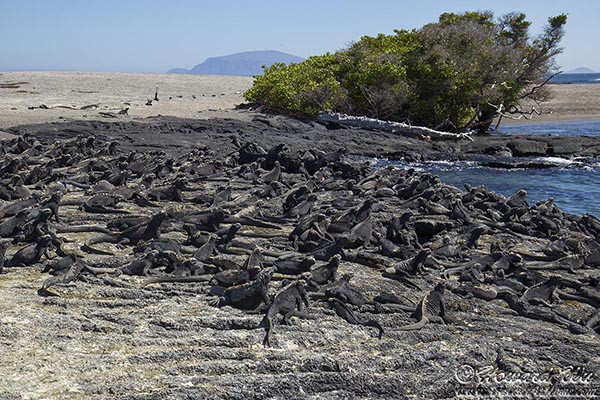
Marine Iguanas
The two reptiles have a congenial and symbiotic relationship: the Lava Lizard hunts small insects, mostly flies, that pester the large Marine Iguana, which seem to welcome this service.
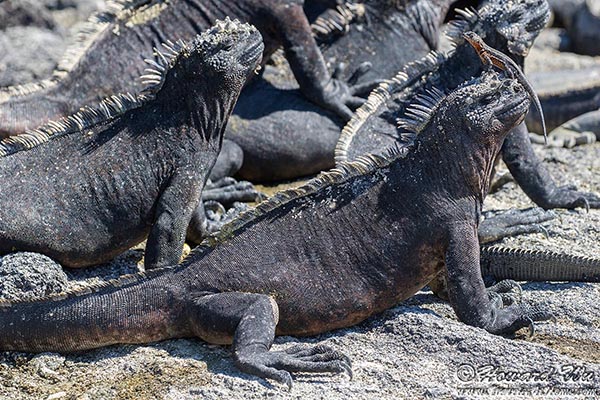
Marine Iguana
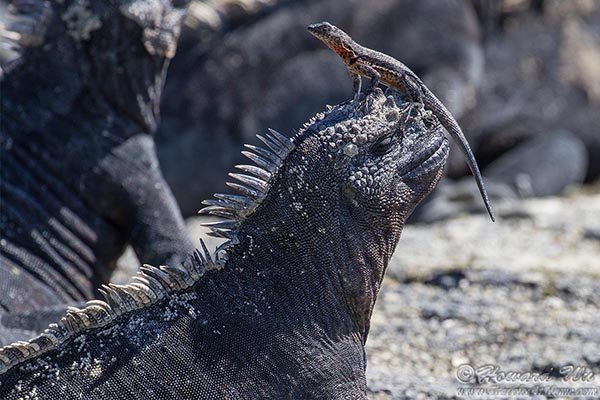
Marine Iguana
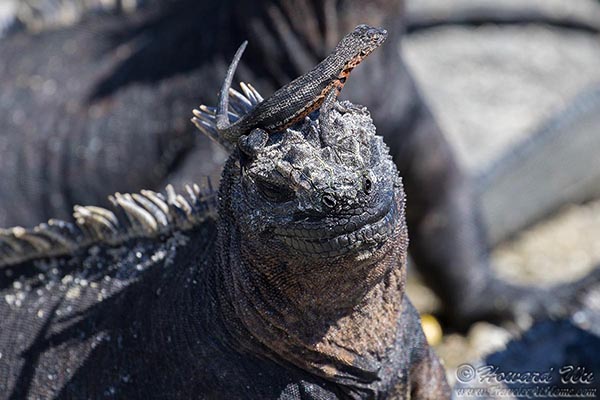
Marine Iguana
Here I had my first sighting of Flightless Cormorant, another Galapagos oddity.
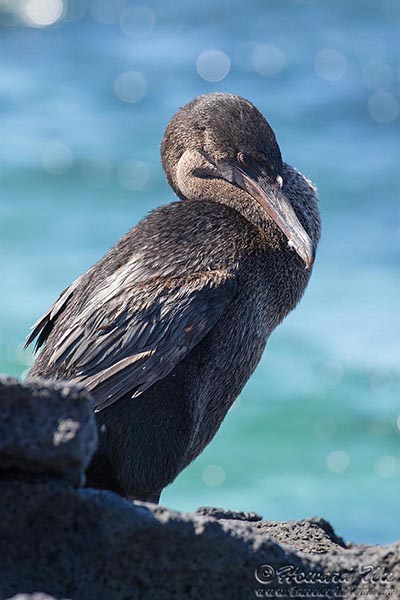
Flightless Cormorant
Just when we were hiking on the black lava rocks, a Galapagos Hawk landed not far from us. It caught a young Marine Iguana and started devouring it. It was a great scene of nature in action to witness.
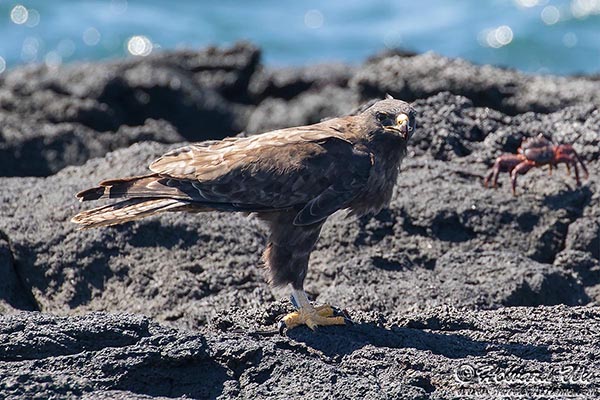
Galapagos Hawk
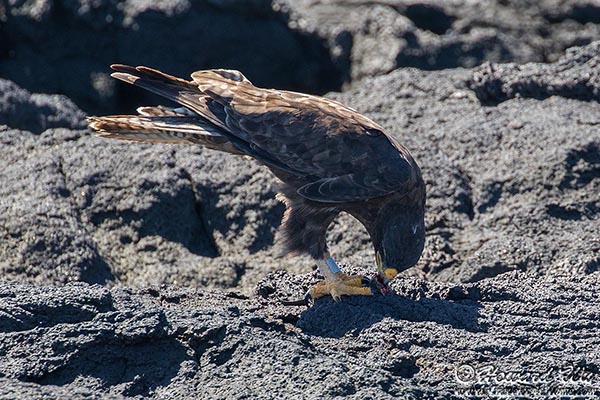
Galapagos Hawk
One of the lagoons with coarse volcanic sands at its bottom apparently serves as a launching spot for the Marine Iguanas. It was interesting to see these awkward reptiles on land transform into nimble seafaring creatures in the water.
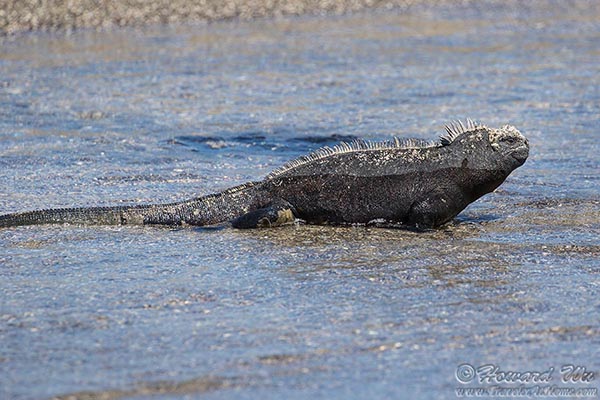
Marine Iguana
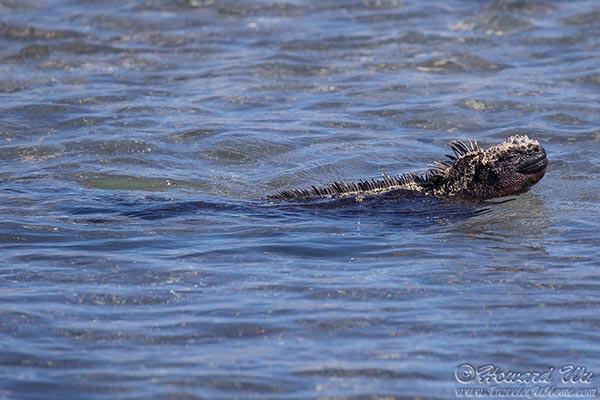
Marine Iguana
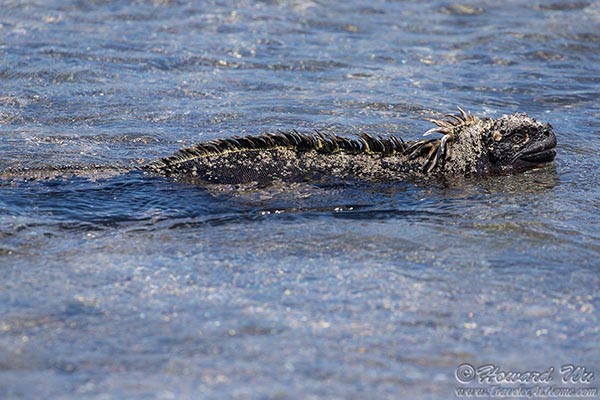
Marine Iguana
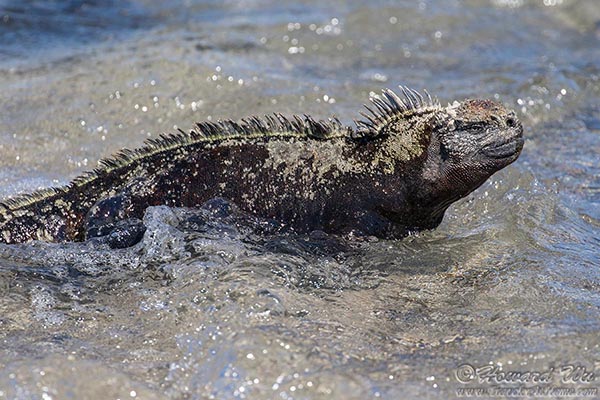
Marine Iguana
Galapagos Sea Lions were also resting on the beach.
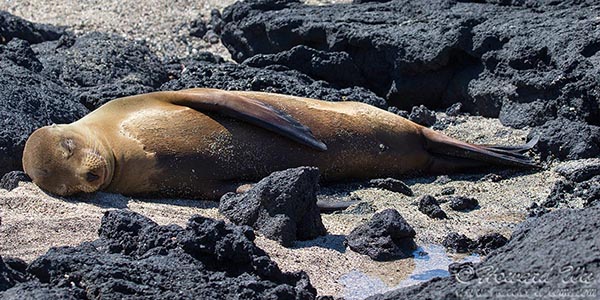
Galapagos Sea Lion
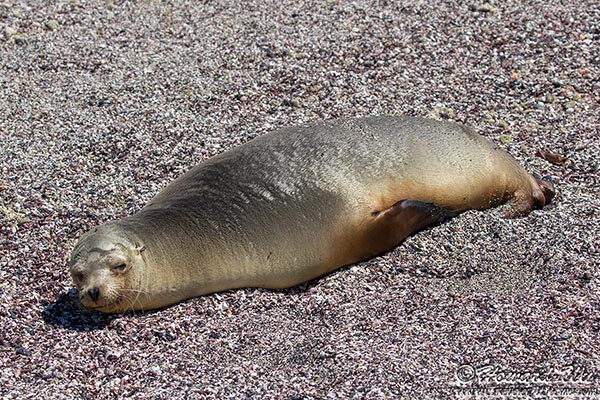
Galapagos Sea Lion
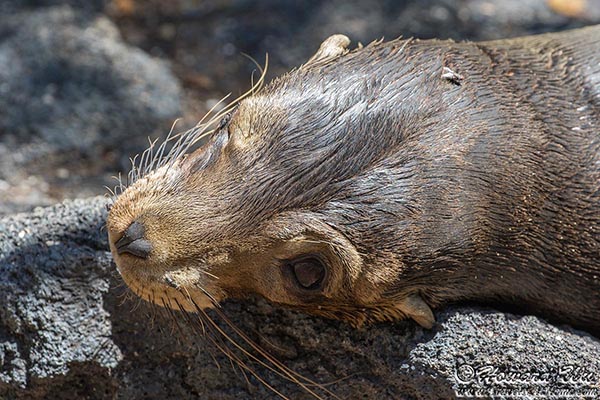
Galapagos Sea Lion
Hiking a little farther inland, the most fascinating sight was the pioneering Lava Cactus getting a hold in the barren lava field.
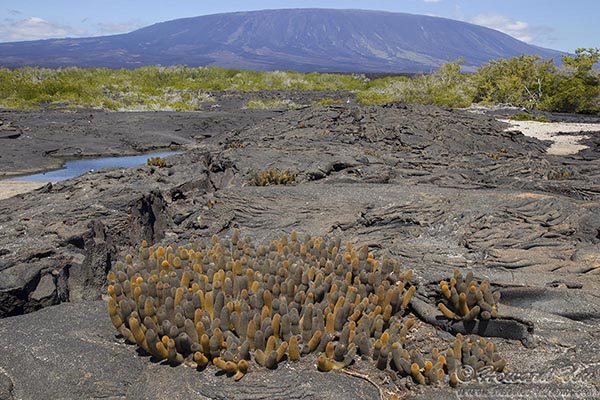
Lava Field
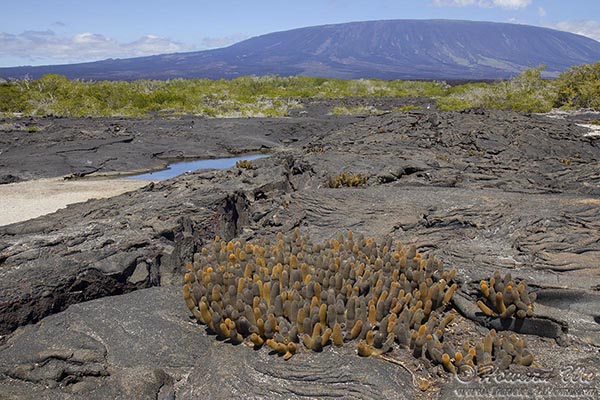
Lava Field
A closer look at a cluster of Lava Cactus.
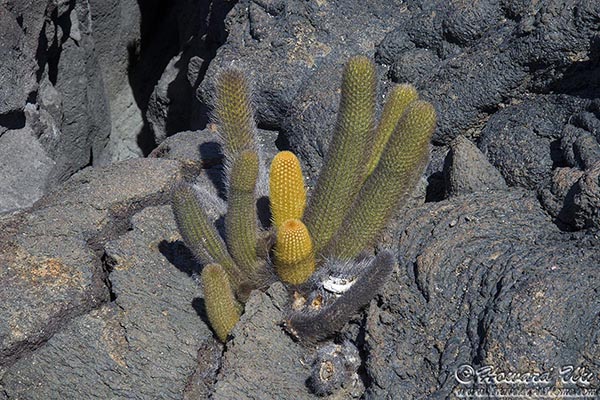
Lava Cactus
Before leaving Fernandina, I took pictures of a few perching Galapagos Hawks.
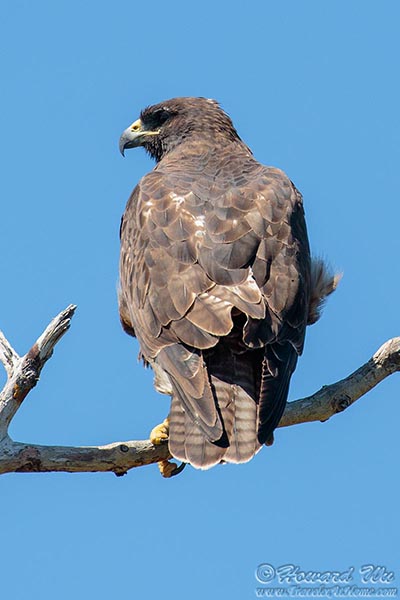
Galapagos Hawk
We had a chance to snorkel here afterwards, but we made a regrettable decision not to participate this time. We heard later that this was the best snorkeling during the whole trip, and people saw Sea Turtles, Marine Iguanas and sharks in the water. I took solace that I watched and photographed many Green Sea Turtles and Flightless Cormorants from the sun deck, some at very close range.
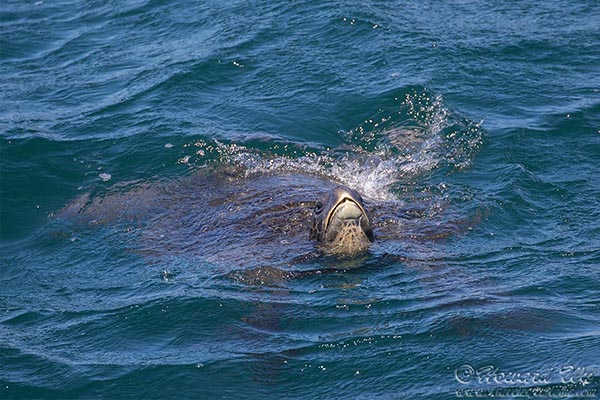
Green Sea Turtle
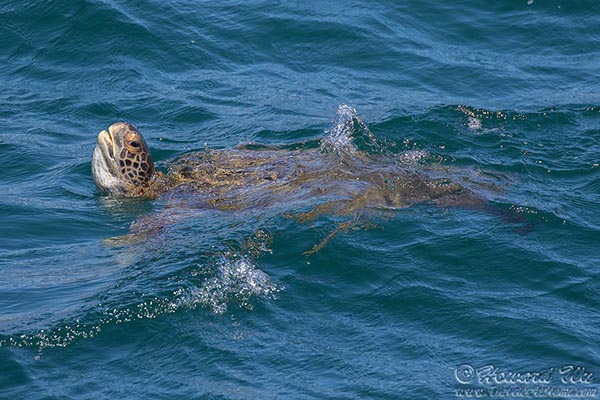
Green Sea Turtle
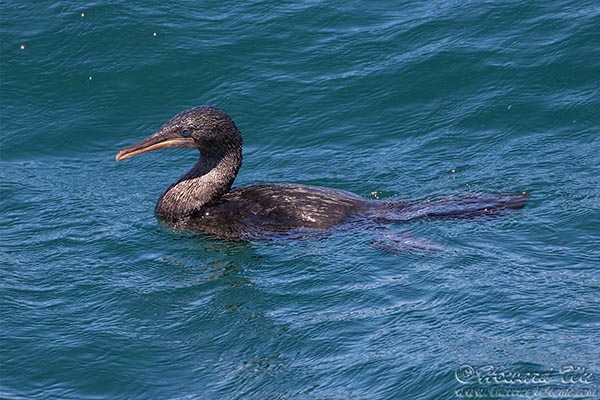
Flightless Cormorant
In the afternoon we landed at Urbina Bay on Isabela Island at high tide. We had trouble landing -- the panga operator had to line the boat perpendicular to the rolling waves to avoid capsizing and wait until it got calmer to let us land. After some struggle we got ashore safely.
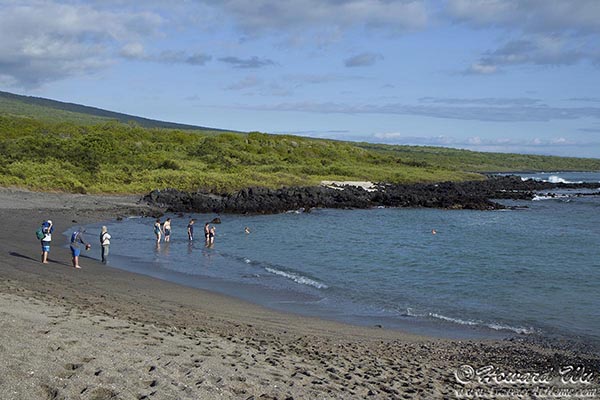
Urbina Bay
On the trail we were immediately greeted by a Giant Tortoise. Although we had seen Giant Tortoises before this, and we would see many after, this was our first encounter with a Giant Tortoise in the wild (the other ones were all captive). In fact, Urbina Bay would be the only place where we saw wild ones.
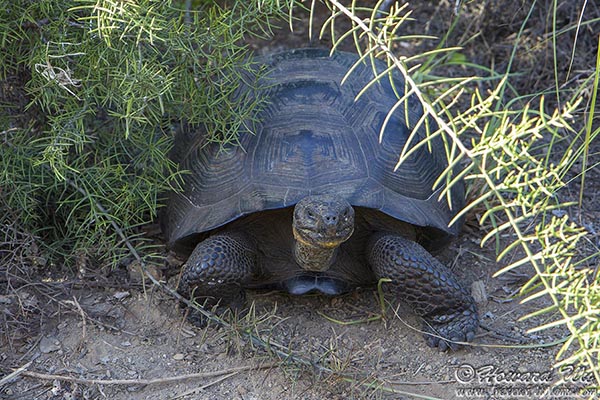
Giant Tortoise
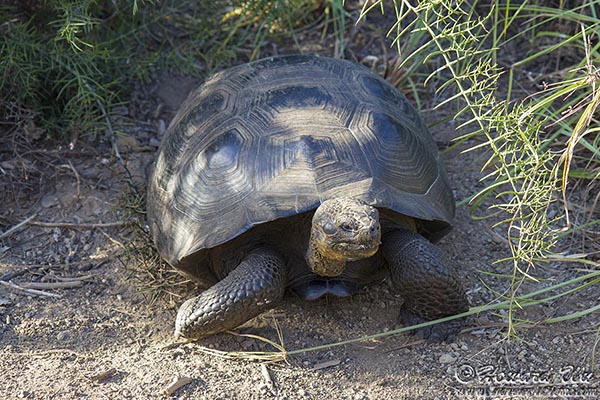
Giant Tortoise
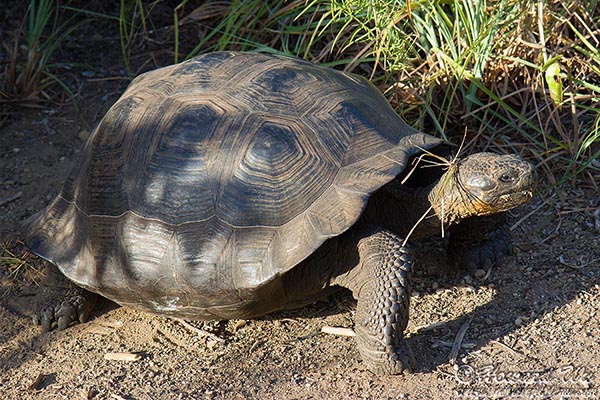
Giant Tortoise
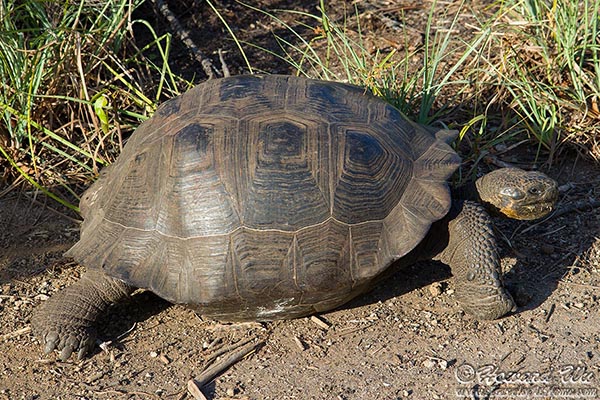
Giant Tortoise
Urbina Bay is also one of the birdiest place that we visited on this trip, especially for small passerine birds. We waw Galapagos Flycatchers and flocks of Darwin's Finches. This Darwin's Finch that I photographed is a Small Ground Finch, I believe (although it has a slightly larger bill).
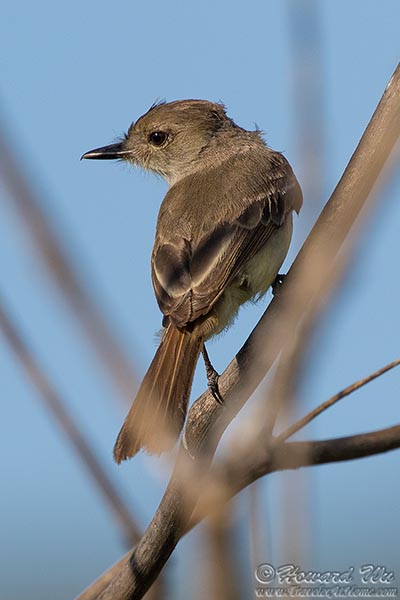
Galapagos Flycatcher
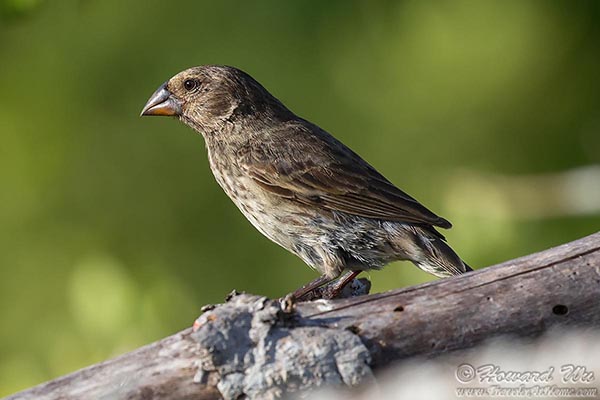
Darwin's Finch (Small Ground Finch?)
And Yellow Warblers, the only true warbler species in the Galapagos. This is quite curious: this is a warbler that I sometimes see in my backyard in Virginia, and it is but one of the many migratory wood-warblers in where I live. But here in the Galapagos, no other warbler species has got a foothold, yet this one firmly established itself throughout the archipelago -- we have seen them in almost every place we visited. I am sure there is an evolutionary explanation for this, but I have not yet found a convincing theory. This one that I photographed is a female, probably collecting spider webs as nesting material.
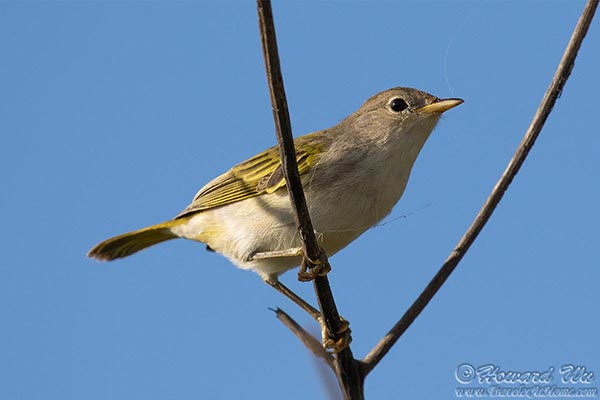
Yellow Warbler
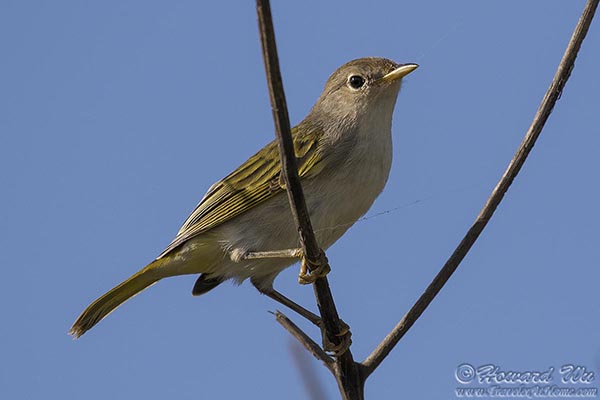
Yellow Warbler
Urbina Bay also boasts the largest Land Iguanas in the islands, they certainly look very sturdily built.
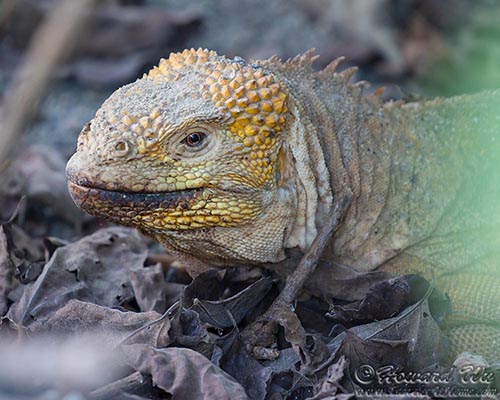
Land Iguana
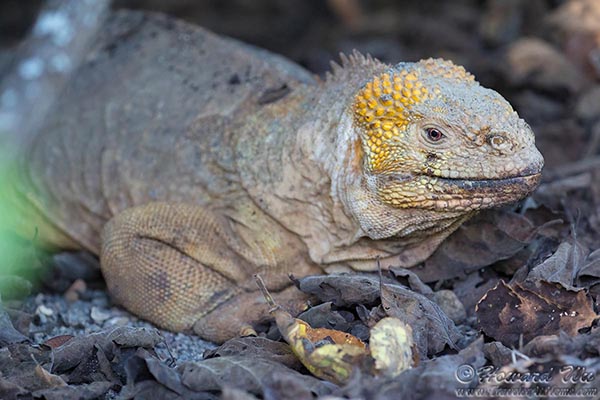
Land Iguana
In one field we saw several Giant Tortoises feeding on the lush vegetation. Someone from our group remarked "This looks like the Jurassic Park!", I would agree: this scene looks quite prehistoric.
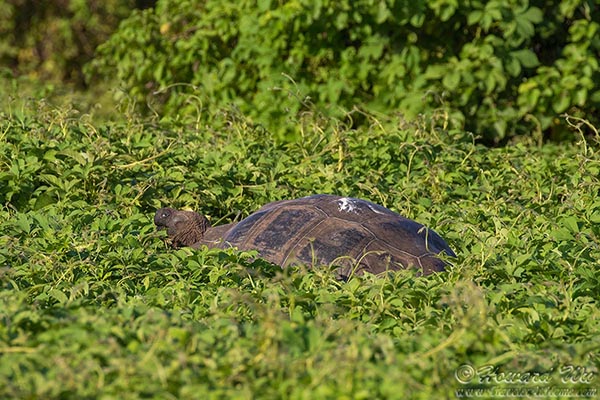
Giant Tortoise
Galapagos Mockingbirds were also numerous here.
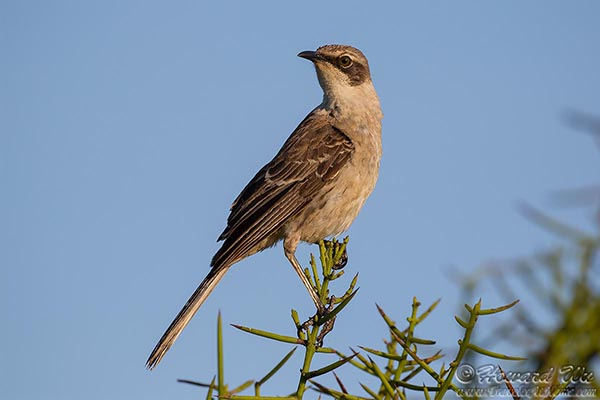
Galapagos Mockingbird
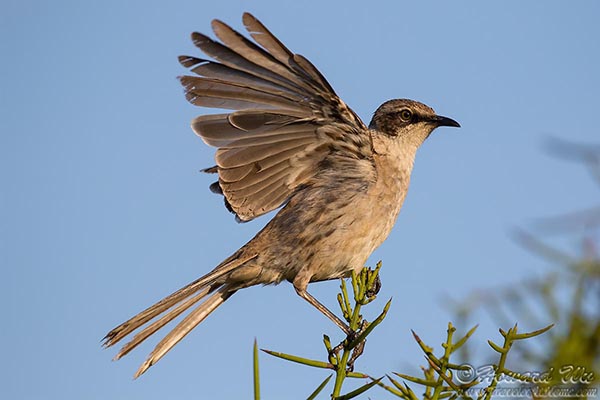
Galapagos Mockingbird
I also photographed a spider, probably a Giant Huntsman, in the beautiful late afternoon light.
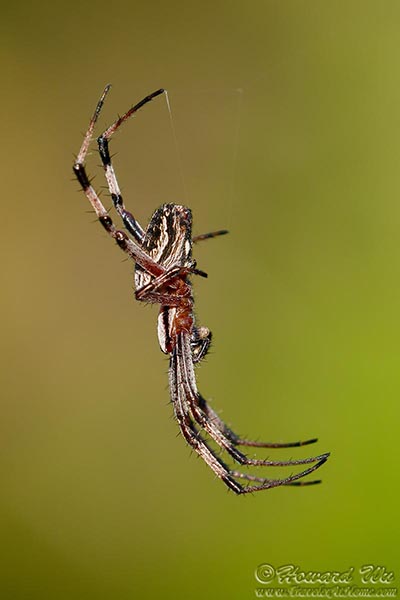
Spider (Giant Huntsman?)
While waiting for our panga on the beach, again I was greeted by flock of Darin's Finches (I am pretty sure this one is a Small Ground Finch) and the ubiquitous Yellow Warblers.
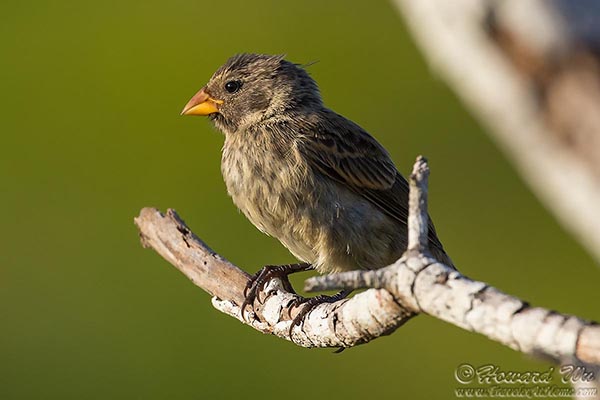
Darwin's Finch (Small Ground Finch)
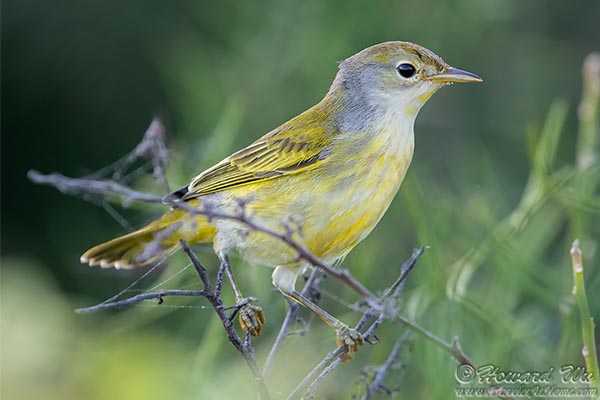
Yellow Warbler
A Hermit Crab also made a cameo on the sandy beach.
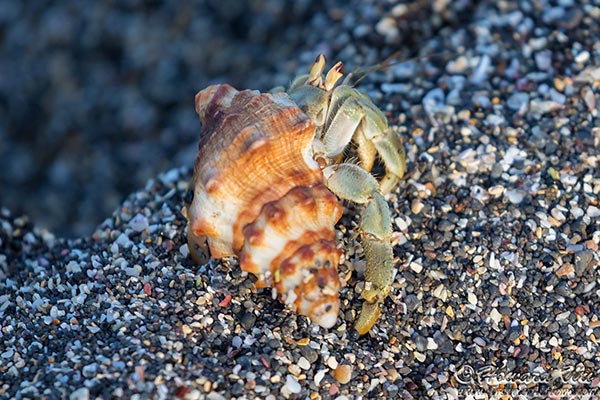
Hermit Crab
Then it was time to boat the panga and go back to the yacht.
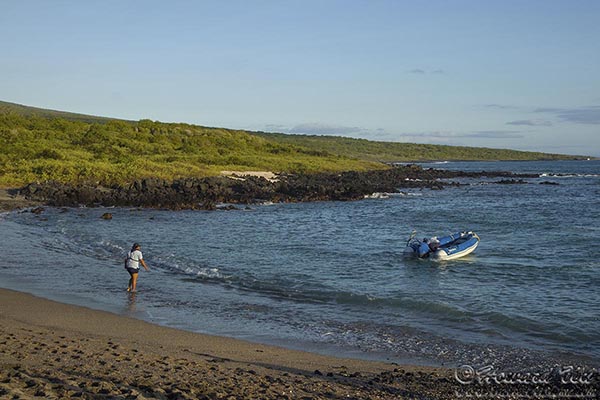
Urbina Bay
From the sun deck, I watched the sun set over Isabela Island. Thus, the day that started with a glorious sunrise also ended with a resplendent sunset.
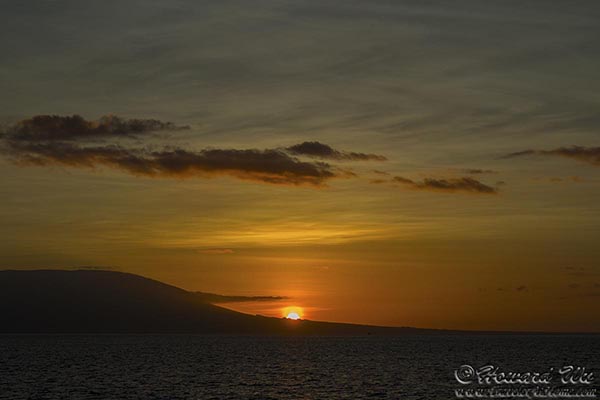
Sunset over Isabela Island
Click the image below to return to the index page of Spring 2018 trip to the Galapagos:
